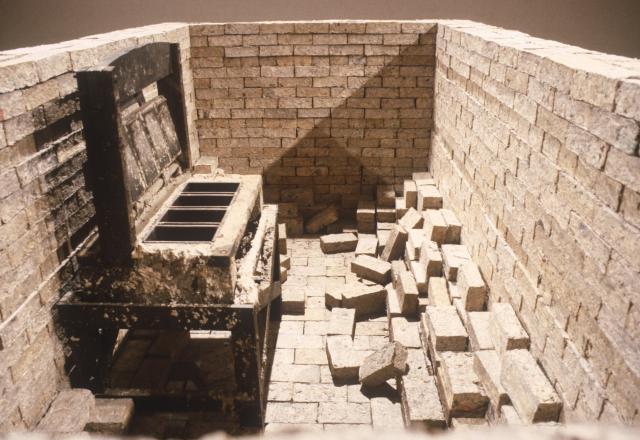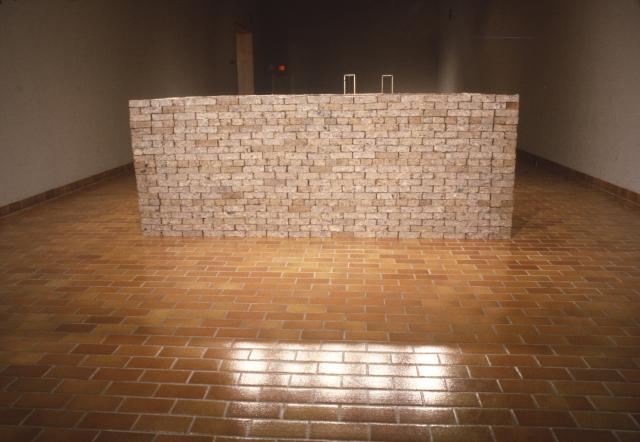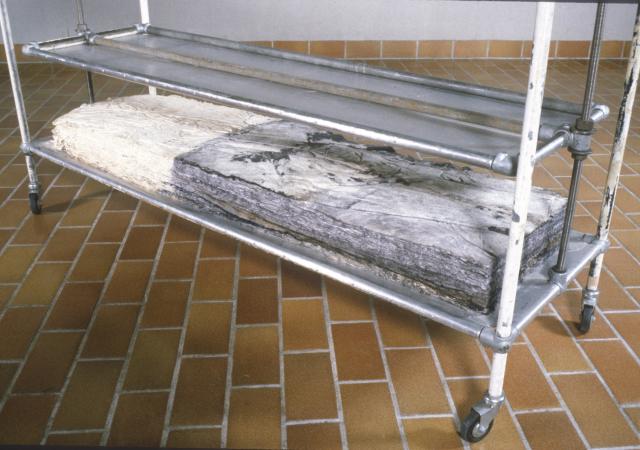
Exhibition
10 Sep 1981 - 7 Oct 1981
OPENING RECEPTION
Thursday September 17, 1981
8 – 10 PM
Four Boys and A Girl
Liz Magor
Of the three pieces included in this exhibition of Liz Magor's work at the Alberta College of Art Gallery, Four Boys and A Girl is a direct descendant of the earlier compost figure series of 1978. The artist has stated that the compost figures in turn were to a coffin she viewed while travelling in Egypt, fashioned in the outline of a male figure in the striding position-a casket lined with grass.
However inspired by this ancient Egyptian artifact, Magor's compost figures are at cross-purposes to the essential motivation of Egyptian funerary monuments and accoutrements which, "harl to be a portrait of a sort which would avoid any suggestion of mortal frailty or the ephemeral nature of human life". For Magor's compost figures model the temporal nature of our earthly existence. Intended to parallel the natural processes of creation, they consequtively exhibit an analogous vulnerability to the passage of time, the inexorability of change and deterioration upon objects and ourselves.
In short, Liz Magor's work embodies the forces of life, conversely death, and natural phenomena.
While the figurative element of Four Boys and A Girl is less obviously defined than in the silhouetted compost figures, the human annotation is provided by scale and the scraps of worn clothing incorporated with grass-clippings, sticks and glue, forced into her machine and pressed into five slabs. These slabs appear, in visual reference, like cakes on racks 3 or bodies on beds.
Through the drying process they evidence aging to a substantially greater degree than possible through natural decomposition. The title, referring to the artist's family's sibling composition, reaffirms the narrative in terms of the history of a life--her life, our lives.
With Schist the natural references have expanded to par geological forces. Layers of male clothing--white shirts and black pants--have been compressed into a shape of human body scale in length and thickness. The sides have been trimmed, tangibly revealing the process of layering, linking the work to the strata produced by immense geological pressures and shifts in the earth's history.



